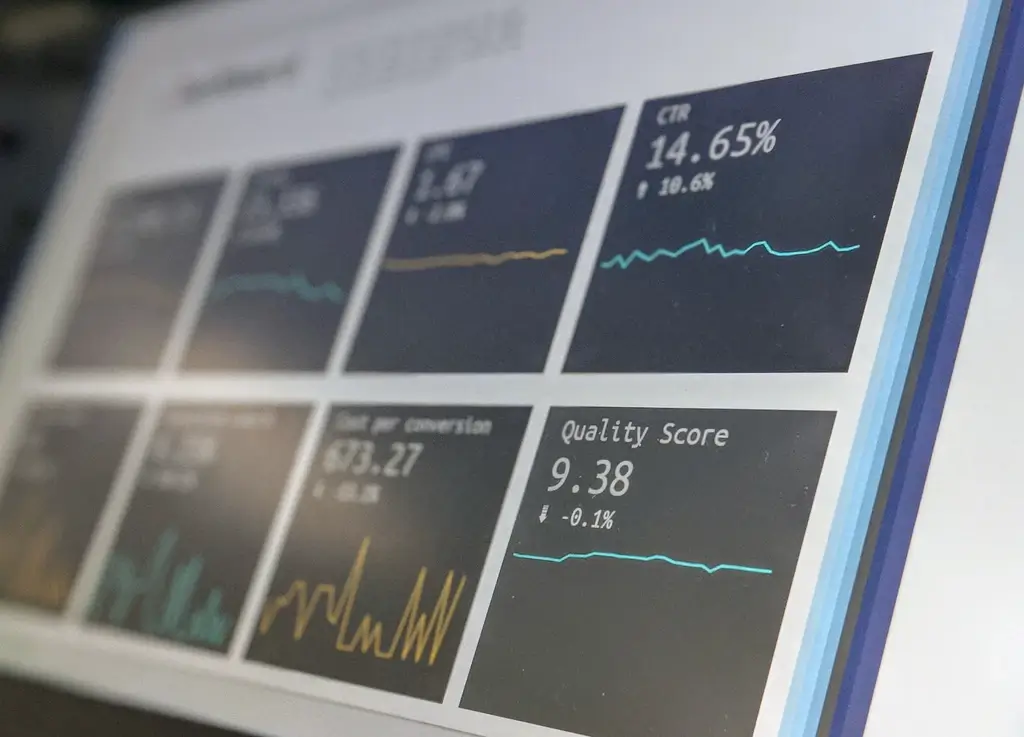Insights
Leveraging GA4’s Advanced Reporting for Better Business Decisions
July 7, 2023

Written by:
For all the panic about moving away from Universal Analytics to GA4, there are actually some exciting new opportunities that the new platform offers. We wanted to take a more optimistic approach, and show you a few of the new tools in GA4 that could help your business make better decisions.
With GA4 using an event based model and the platform providing new machine learning-led insights, metrics, and predictive audiences, there is now a greater range of reporting capabilities available in GA4 compared to UA.
This means that GA4 can provide a far more advanced level of reporting to help inform the data-driven decisions your business is making. In this blog post we speak more about our three favourite reporting capabilities in GA4 and how they can be used to help your business work smarter.
Enhanced event and eCommerce reporting.
GA4 allows you to add up to 25 event parameters to a single event, and up to 27 event parameters for an ecommerce purchase. This means that for a single event (whether that be a button click, interacting with a specific form, getting a quote for a service, or paying a deposit for a holiday) we are able to capture a far more advanced level of reporting.
For example, for a user booking a holiday we are able to capture a range of insights such as:
-
The average number of guests
-
The average number of nights
-
The average booking lead time
-
The most popular payment method
-
The average deposit paid
Such insights can help inform both the UX design on a website (for example, presetting a form-fields to its associated averages), but also inform your wider marketing mix too.
For example, if we know that on average someone books a holiday 100 days prior to departure, you could look to ramp up spending in your PPC activity, for audiences at that particular 100-day mark. Alternatively, we could tailor our minimum deposit messaging, to “Pay just £X today,” to reference the average value that most visitors are happy to pay for a holiday of this type.
This kind of data can feed personalisation and your wider marketing efforts, and it’s the additional parameters available to us within GA4 that can help power this. Whilst we’ve looked at an example here specific to a eCommerce travel client, this could be equally as applicable for a lead-gen businesses, particularly those with a quote or enquiry form.
Predictive audiences.
In GA4 there are a number of predictive audiences available, which use a data driven approach to provide a range of “recommended audiences” you should be looking to target in your marketing mix.
For example, within a couple of clicks you can set up an audience of “recently active users” or “non-purchasers”, and link these to your Google Ads account to then target website visitors who match this criteria, through your paid search activity.
Similarly, where GA4 properties match eligibility, predictive audiences can be quickly set up to target users likely to match a purchase or who are likely to be a high-spending customer.
In short, whereas previously it would have taken a great deal of time and manual effort to identify such audiences to target, GA4 can help to identify those users who are likely to become purchasers or engaged users, allowing your paid marketing activity to focus specifically on this audience type, doing more to push them along the funnel.
New engagement metrics.
The introduction of new engagement metrics (such as active users, engagement rate and engaged sessions) provide a more accurate outlook on user engagement, providing insights on users who are actively or are more likely to engage on the website or app, rather than those who are not.
Previously in UA, metrics such as “total users” provided insights for all users to a website, but this could – and often did – include low quality traffic, such as someone visiting for a couple of seconds by mistake before leaving the website, or test traffic from a developer.
Such website visitors are not a true representation of the target audience for your website or app, and often skewed figures notably (even the best filtering couldn’t catch all of them).
The new ‘active user’ dimension only counts users who have undertaken an engaged session, who match one of the following criteria:
-
Visited the website for more than 10 seconds
-
Completed a conversion
-
Visited at least 2 pages or screens.
This gives you a much clearer picture of website visitors who are actually likely to be the audience we want to focus on – with poorer quality traffic having been filtered out automatically.
Similarly, the new engagement rate provides a percentage of “engaged sessions” on your website or app, providing a more positive spin on the previous bounce rate metric, showing how engaged a user is rather than highlighting that users aren’t engaging with your website.
Through these changes, Google has taken the onus away from trying to constantly filter out the poorer quality traffic, to instead focusing specifically on the engaged audience segment. It’s a more positive outlook, and where relevant we’ve been working with our clients to encourage them to understand and focus on these metrics, as they’re a truer reflection of their key target audience’s user behaviour.
In summary, whilst the move to GA4 has been scary for some, we shouldn’t ignore the positive that the platform can offer. The introduction of more advanced and new reporting capabilities in GA4 allows for a greater level of automated and – what we’d call – “smarter reporting”.
If you have any more questions about GA4, or would like to know more about the depth of insights available for your website – please get in touch.




